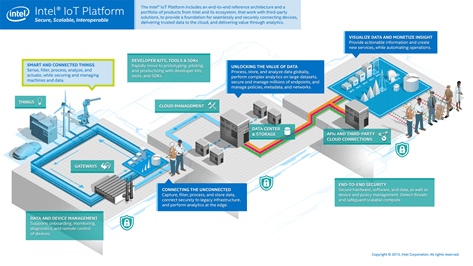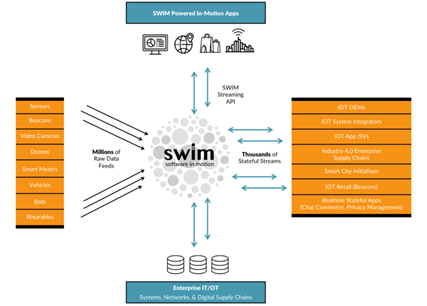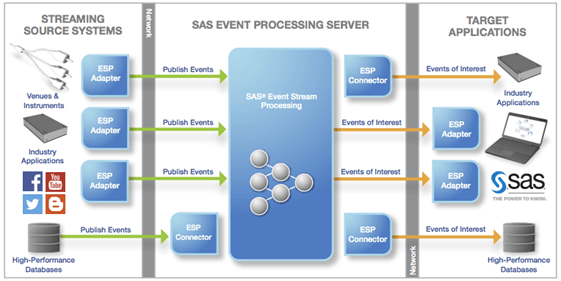Turn Data Overload into Smart Analysis
Smart cities put the “big” in big data. Data needs to be gathered across huge geographies, with a vast variety of data types and analysis requirements. For example, cities may need to collect data including temperature, humidity, pressure, chemicals (pollution), movement (e.g., of cars and pedestrians), sound, and ambient light, just to name a few.
The challenges with smart city applications are many. First, data must be filtered at the source to avoid overloading networks with irrelevant data. In many cases, local analytics are required to make sense of the data. Then the data must be transported upstream across various cloud connections and through multiple APIs to a control center’s display or a decision-maker’s dashboard. In some cases, automated responses are required.
An IoT Foundation for Smart Cities
The Intel® IoT Platform was designed to tackle these challenges. It provides an end-to-end reference architecture that defines the key components of an IoT solution and how they work together. In doing so, the platform provides a foundation for securely and seamlessly connecting cities and enabling intelligent analytics (Figure 1).

Figure 1. The Intel® IoT Platform defines key components of a smart city architecture.
Most important, the Intel IoT Platform provides a common architecture that multiple IoT solution vendors can build on and integrate with. For example, SWIM.IT developed a stream-based IoT framework that integrates with the Intel IoT Platform. The SWIM framework translates data from millions of devices into stateful streams and meta-services that can be consumed in-motion by applications (Figure 2).

Figure 2. Swim.It is a secure, microservices-native, end-to-end fabric.
SWIM securely manages the end-to-end “chain of custody” of IoT data flows to ensure data integrity and regulatory compliance, making it easier to integrate IoT data into larger IT systems. Use cases include public transportation fleet management, traffic management, environmental quality monitoring, and ride sharing.
Stream Processing Makes Analytics Manageable
With millions of sensors transmitting billions of bytes of unstructured data, smart cities present unique challenges in terms of separating urgent information from mundane noise. Identifying important data in a timely fashion can have major consequences, sometimes even the difference between life or death.
To analyze high volumes of data at high speed, SAS Event Stream Processing takes a unique approach (Figure 3). Instead of running queries against stored data, it stores the data management and analytical routines, and streams massive amounts of data through these queries. This effectively allows the technology to filter, normalize, and aggregate the data and detect anomalies and patterns in realtime.

Figure 3. SAS Event Stream Processing lets users analyze high-velocity big data before it’s stored.
SAS Event Stream Processing can be integrated into other SAS applications, such as SAS Asset Performance Analytics, SAS Decision Manager, and SAS High-Performance Risk. These connections enable in-depth analysis that can trigger the appropriate action at any point across the city.
Rolling Out a Smarter IoT
These are just a few examples of the ways developers can analyze data from millions of sensors across a smart city. For more examples of sensor data analysis solutions—many designed for specific use cases—check out the Solutions Directory.